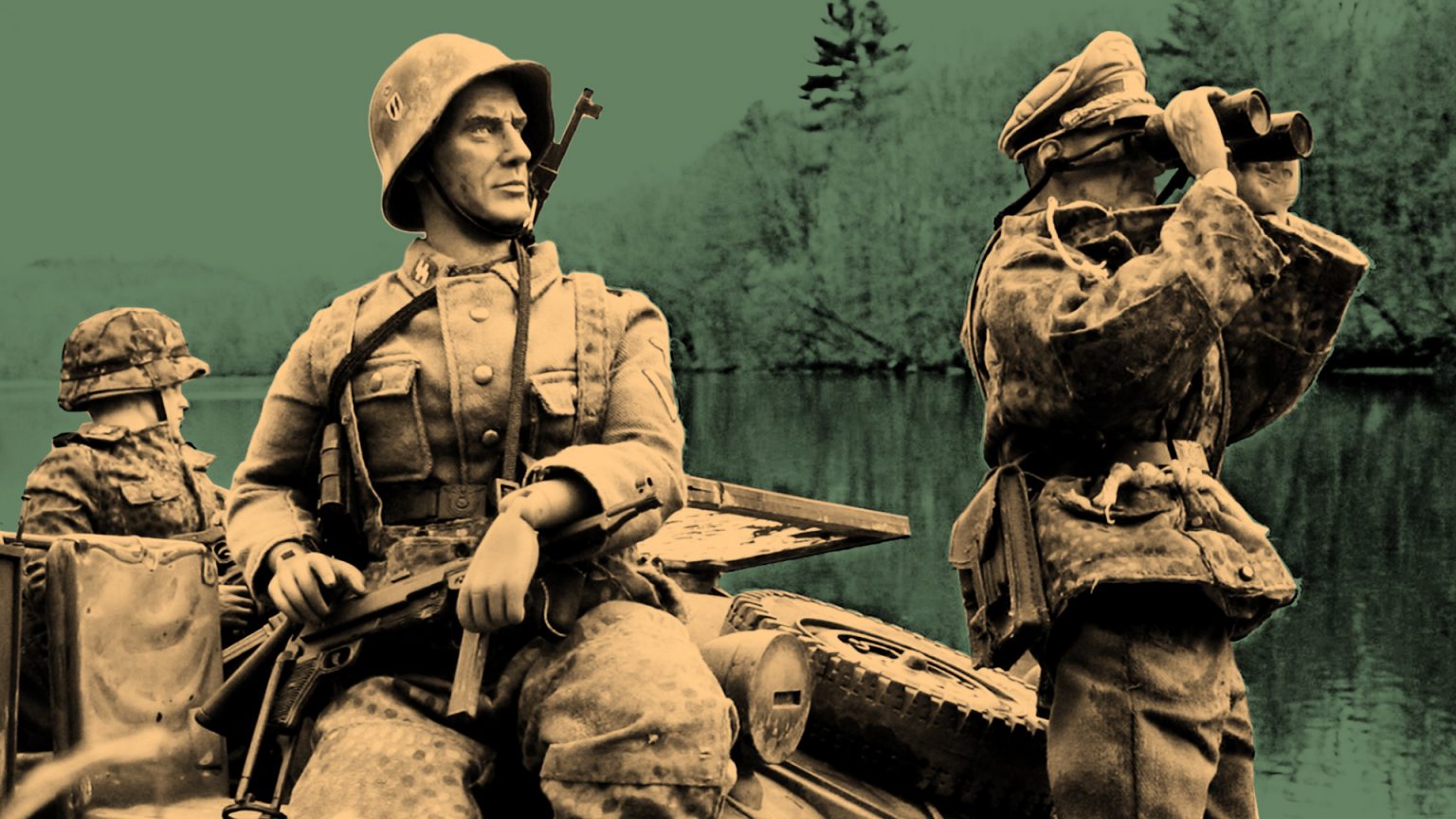Warning: Spoilers ahead.
Miniatures have a long history in cinema, bringing new worlds to life as a tool for special effects—look no further than the mini-cities erected for monster movies like Godzilla and Gorgo, or the stop motion effects used in the original Star Wars movies. When framed in close-up, a miniature tableau becomes lifesized, presenting us with an optical illusion. However, seeing such miniaturized environments in contrast with human subjects offers more than a mere illusion—miniatures can be used to warp the viewer’s sense of perspective, inviting us to question the reality of the film.
Ari Aster’s Hereditary used miniatures to dramatize its thematic elements, and by necessity, also utilized miniatures for its special effects. The film opens with a long take that pans around the Graham family home, moving past the jumble of tools and materials which comprise the workshop where Annie Graham (Toni Collette) makes miniature tableaus, then zooms in on a model house to reveal Annie’s son Peter (Alex Wolff) sleeping inside. This shot sets the scene while unsettling the audience at the same time—our sense of proportion and reality is thrown out of whack, and we are immediately filled with unease.
For Aster, the miniature models operate as a metaphor for the Grahams’ lack of autonomy: They are being manipulated like dolls in a dollhouse, their fates preordained by demonic forces. The aforementioned opening shot represents this manipulation—suggesting that the Grahams are mere miniatures to be manipulated. We see this at play throughout the film, first, as the family suffers the death of a matriarch and then a young daughter, Charlie (Milly Shapiro). The weight of mourning becomes a potent undercurrent in the film, warping their family dynamic, and making the Grahams spin out of control—a progression of events that seems intentional or manipulated.
It is revealed that Annie’s fate is (unbeknownst to her) being engineered by sinister powers, so it’s no surprise that Annie reaches for any method whatsoever to regain a sense of control over her own life. She crafts a gruesome but “objective” model of her daughter’s death, as if to step back and examine it closely from all sides—an exercising of her supposed “agency.” But this only adds to the mounting tension in the household, and as it turns out, does nothing to stop the tragedy that has already been put in motion by outside forces.
In tackling real-life issues of severe trauma and loss, Jeff Malmberg’s 2010 documentary Marwencol shares a surprising amount in common with Hereditary—miniatures once again play a starring role. Here, Marwencol is the name of a 1:6 scale World War II-era Belgium town, built by a man named Mark Hogancamp, who has severe brain damage as a result of being brutally beaten for being a crossdresser.
The attack left Hogancamp with no memory of his previous life or identity and only relics of the person that he used to be—a diary, some photographs, and stories from family and friends. As a form of rehabilitation, he constructs scale models. Soon this pastime expands into a world-building exercise, and Marwencol becomes a sort of living dream where he sorts out his identity, emotions, and relationships. In fact, he and a number of real-life colleagues and friends have avatars to represent them in the town.
Marwencol is frequently invaded by doll-sized versions of the Nazi S.S., villains who stand-in for the darker parts of Hogancamp’s subconscious—his fear of his attackers and his anger at what they took from him. Subsequently, Marwencol is often a violent place, where Hogancamp enacts brutal murders and torture scenes, replete with delicately carved bullet holes, blood-soaked snow, and other horrific details.
Hogancamp photographs the scenes in Marwencol with a practiced eye, carefully placing the figurines to tell their stories, which seem to run like a film in his mind. The resulting photographs are haunting and lifelike, demonstrating how Hogancamp sees Marwencol—as a real and vibrant place. But Malmberg always pulls back to show Hogancamp splayed on his stomach, placing objects in the dolls’ hands and posing their plastic limbs—the sole architect of Marwencol.
Much like Annie Graham does with the model of Charlie’s death, Hogancamp at times blurs the lines between Marwencol and his real-life in uncomfortable ways. He tends to describe the stories as though they actually occurred, rather than merely springing from his imagination. This makes it all the eerier when Mark reveals, without irony, that his doll has begun constructing his own 1:6 scale models, laid out stiffly on the ground, tiny cardboard camera placed carefully in plastic hand.
At some point or another, all of us question whether we are truly in control of our own actions. Annie Graham and Mark Hogencamp are both victims of tragic circumstances, and utilizing miniatures became an outlet for both to reassert a modicum of agency in an indifferent reality. The use of miniatures suggests a desire to play god—making rules and doling out fates—but also a certain amount of powerlessness. Miniatures can provide a new perspective on existing structures, but cannot change the past or the future. For those of us in the audience, they are an uncomfortable reminder that while we may grasp for a sense of control over our lives, in the end, we can never really know who is pulling the strings or what is in store for us.
Watch Now: Marwencol




